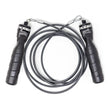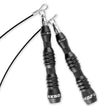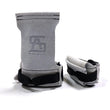MAY 4, 2023
Dealing with leaking urine during competition or training.
Interview with Dr. Katie at Sports Performance Physical Therapy - San Diego, California
MAY 4, 2023
Dealing with leaking urine during competition or training.
Interview with Dr. Katie at Sports Performance Physical Therapy - San Diego, California
Tell us about your experience in Sports Performance Physical Therapy
I started out as a sports PT here at Sports Performance, and I have worked with a number of athletes and clients. My specialty is more in the endurance and barbell realms. And a lot of my clients in those fields tend to struggle with issues with leaking urine during competition or training, especially with longer endurance or high impact workouts. And that's something that everybody seems to be worried about, and we really want to dispel the myths surrounding that. And also, if you're experiencing it, that's not something to be ashamed of; that's something to work through with a health care provider, a PT, or someone like me who can help you work through that. So today I'm going to teach you a few different exercises for a few different reasons so that you can strengthen those muscles or move those muscles so that they're a little bit more mobile, so you're not having any tension. I frequently see that my clients who struggle with this have either too tight, too weak, or a combination of both muscles in that area. So it's a strength or mobility challenge. So what you can work on is strengthening the entire lumbopelvic complex, so anything from your rib cage down to your thighs, and training that core strength, the glute strength, the adductors, all of that. You also want to think about those muscles of the pelvic floor, which act like a hammock to hold all of your pelvic contents. So if you think about fatigue over time, that just starts to strain and put more pressure on it. So it's much harder to hold that urine in. So it can cause that leakage during activity, and so a lot of my clients will say that towards the end of my workout, towards the end of the metcon, is when I start to experience these issues. So what we need to talk about is how you can mobilize and strengthen, and we'll go over those now.
The Workout
- Dr. Katie
The Workout
- Dr. Katie
All right, so the first exercise that we can start with is taking a small loop band.
You can use an easy-to-medium band, and what you're going to do is take that and put it right around both of your feet. You want to find a bench or an elevated surface, and you're going to end up on a plank, on that elevated surface. Focusing on engaging those lower abdominals and making sure that your glutes are engaged so you're not piked back or sagged down too far. Find your high plank position, and you're going to pull through your hip flexor in the front of your hip, bringing your knee forward. So very much like a mountain climber, but you're going to hold that for a good second. From there, you're just going to alternate, up and down. And I like to do this one for time. So I'll do 15 seconds on one side, and 15 seconds on the other. Here, we're looking for stability and control. So you don't need to be going fast. It's all about control and timing. Once you're comfortable with that position, you can walk it down to the floor, and do it from here. But starting from the floor is going to be harder, so I always recommend starting at the top. That's going to be your band-resisted hip flexor march, with a loop band. You can do two or three rounds of those 15 seconds on each side.
The second one is going to be called adductor rockbacks.
So adductor rockbacks help to lengthen the tissue and the muscles on the inner thigh. So within that area, those muscles attach to the highest point here at the pelvis. So that's going to create a lot of tension on that pelvic floor if it's too tight, and these muscles tend to be really, really strong. So we're going to work on one knee on your ab mat, with the other leg kicked out to the side. And you're just going to put your hands down and sink your butt back towards your heel. And you can do a 5 second hold or a 10 second hold, whatever is most comfortable. And if that's too easy, you can always add in a little more stretching by reaching under. Hang out there, give it a little bit of a breath, and if you've ever done yoga, breathe through it. And then you’re going to come back up. And repeat. Do that on both sides. I'll do two sets of three sets of five seconds on each side, and then I'll add that to my warmup. It's a good dynamic warm up.
The third one is pallof presses in a split stance.
This exercise will help strengthen those pelvic muscles and also give you a little bit more mobility and control through the pelvis. You can use crossover symmetry bands, any kind of resistance band like this, or even the really skinny pull up bands that we use. And you're going to start in a split stance, almost like you just caught a split jerk. And you will do this on both legs, not just your dominant leg, and you're going to create enough tension on that band that you feel that resistance, and in your split stance, your hips are squared forward. Create that tension through the pelvic floor, brace your abs, and tuck your buttocks because you don't want to be soft through that low back, and you're just going to press in and out with that resistance. Not letting it pull you in at all, because you want to fight out against resistance a little bit. That's going to teach you control through here, but also in a split stance. A lot of my runners struggle to keep that dissociation under control, and that creates a lot of leakage. On this one, we would go higher on the reps, especially if you struggle with endurance. So you do 15 reps per leg forward, two to three sets on each side, maintaining good core control and upright trunk posture throughout.
Top Jump Ropes Picks
GET 15% OFF RXSG DISCOUNT
Written by Dr. Katie
Dr. Katie is a native San Diegan who has returned home after some time spent in Arizona. She attended San Diego Mesa College and CSU, Chico where she received her Bachelor’s degree in Exercise Physiology. At both SD Mesa and Chico State she was on the Cross Country and Track & Field teams, running middle and long distance races. Dr. Katie completed her Doctorate of Physical Therapy at Franklin Pierce University in Goodyear, Arizona. She has completed coursework in women’s health and chronic pain.








Leave a comment
This site is protected by reCAPTCHA and the Google Privacy Policy and Terms of Service apply.